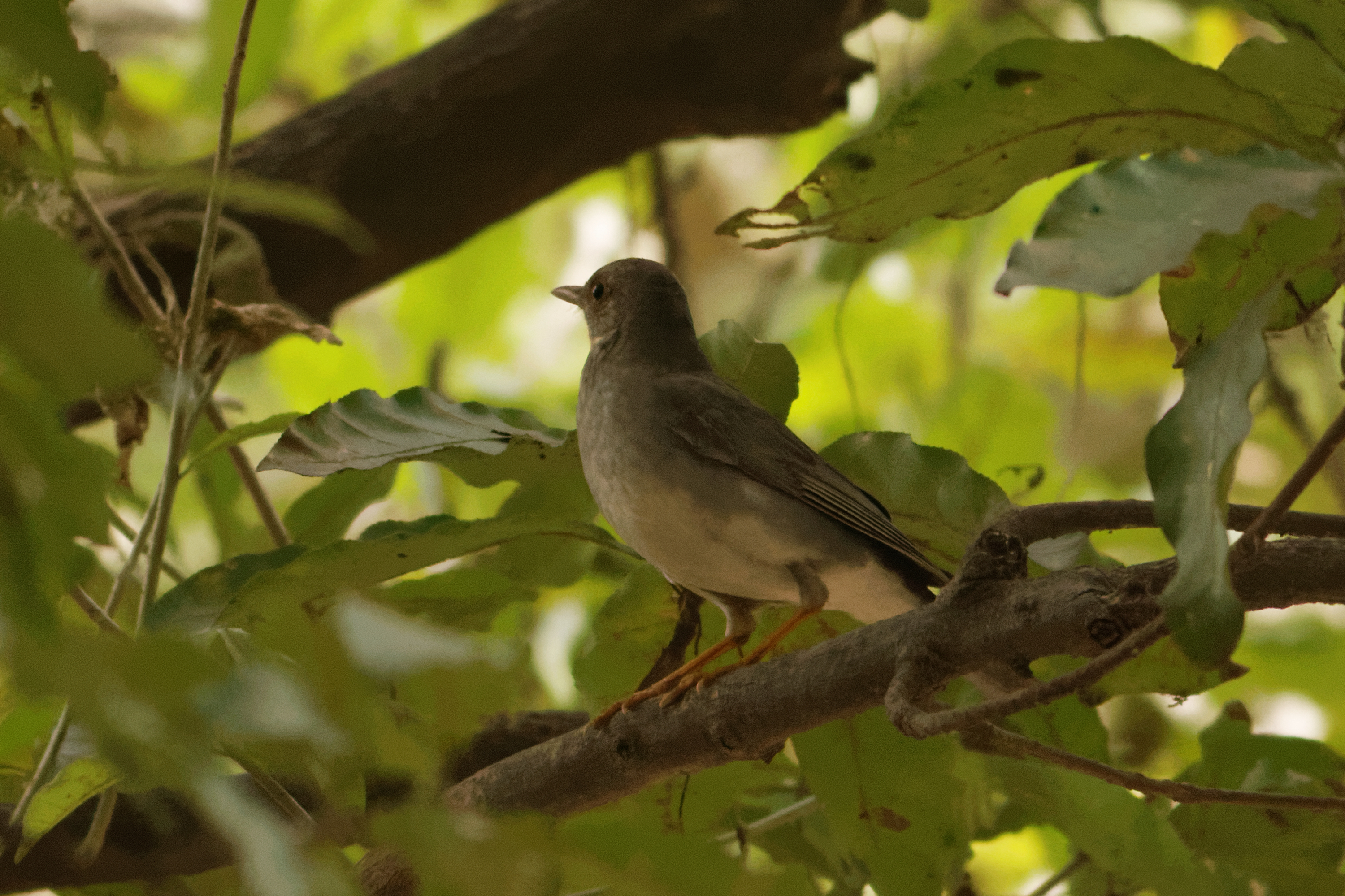Tickell's Thrush on:
[Wikipedia]
[Google]
[Amazon]
Tickell's thrush (''Turdus unicolor'') is a

 The Tickell's thrush is
The Tickell's thrush is
passerine
A passerine () is any bird of the order Passeriformes (; from Latin 'sparrow' and '-shaped'), which includes more than half of all bird species. Sometimes known as perching birds, passerines are distinguished from other orders of birds by th ...
bird
Birds are a group of warm-blooded vertebrates constituting the class Aves (), characterised by feathers, toothless beaked jaws, the laying of hard-shelled eggs, a high metabolic rate, a four-chambered heart, and a strong yet lightweig ...
in the thrush family Turdidae. It is common in open forest in the Himalaya
The Himalayas, or Himalaya (; ; ), is a mountain range in Asia, separating the plains of the Indian subcontinent from the Tibetan Plateau. The range has some of the planet's highest peaks, including the very highest, Mount Everest. Over 100 ...
s, and migrates seasonally into peninsular India
India, officially the Republic of India (Hindi: ), is a country in South Asia. It is the seventh-largest country by area, the second-most populous country, and the most populous democracy in the world. Bounded by the Indian Ocean on the so ...
, Nepal and rarely to Bangladesh.
The name commemorates the British ornithologist Samuel Tickell
Colonel Samuel Richard Tickell (19 August 1811 – 20 April 1875) was a British army officer, artist, linguist and ornithologist in India and Burma.
Biography
Tickell was born at Cuttack in India to Captain Samuel Tickell (of the 8th regiment of ...
who collected in India and Burma.
Characteristics
Males of the Tickell's thrush have uniform blue-grey upperparts, a whitish belly and vent. Adults have yellow beak and legs while it may be darker in juveniles. There is a yellow eye-ring which is thinner and fainter than the Indian black bird which is usually bigger in size. Females and young birds have browner upperparts.Distribution and habitat

 The Tickell's thrush is
The Tickell's thrush is omnivorous
An omnivore () is an animal that has the ability to eat and survive on both plant and animal matter. Obtaining energy and nutrients from plant and animal matter, omnivores digest carbohydrates, protein, fat, and fiber, and metabolize the nut ...
, eating a wide range of insect
Insects (from Latin ') are pancrustacean hexapod invertebrates of the class Insecta. They are the largest group within the arthropod phylum. Insects have a chitinous exoskeleton, a three-part body ( head, thorax and abdomen), three ...
s, earthworm
An earthworm is a terrestrial invertebrate that belongs to the phylum Annelida. They exhibit a tube-within-a-tube body plan; they are externally segmented with corresponding internal segmentation; and they usually have setae on all segments. T ...
s and berries
A berry is a small, pulpy, and often edible fruit. Typically, berries are juicy, rounded, brightly colored, sweet, sour or tart, and do not have a stone or pit, although many pips or seeds may be present. Common examples are strawberries, rasp ...
. It nests in bushes. It does not form flocks, but loose groups of two to five.
Populations move further south in India and Nepal in winter.
References
Tickell's thrush Birds of Pakistan Birds of North India Birds of Nepal Birds of Bhutan Tickell's thrush {{turdidae-stub